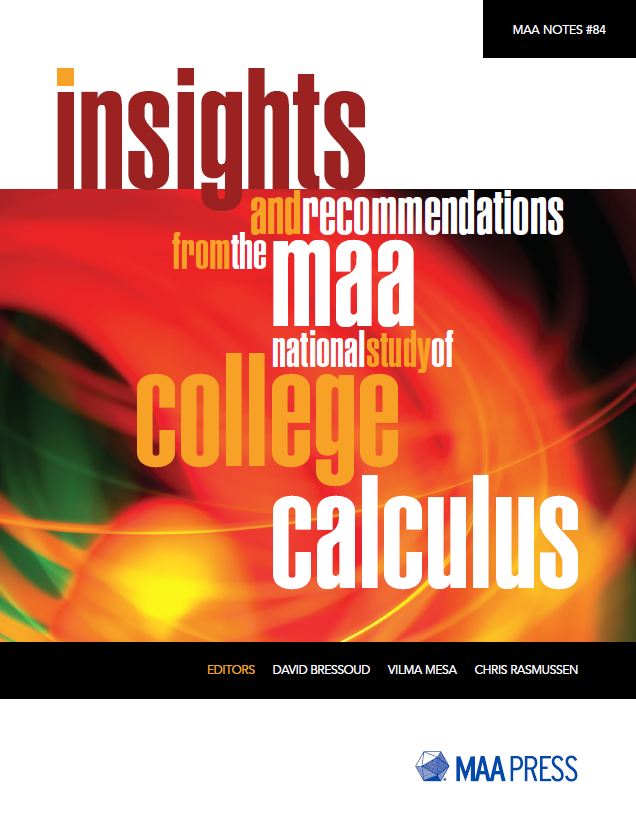From 2015 through 2019, the MAA conducted a study of the Precalculus through Calculus II sequence in U.S. colleges and universities, sponsored by NSF (DUE I-USE #1430540). The goals of this study are:
- What are the programs and structures of the P2C2 sequence as currently implemented?
- What programs and structures are currently in place and how common are they?
- What changes to these programs and structures are being implemented in Mathematics departments, either in pilot programs or as large-scale initiatives?
- What is the fine-grain structure of these programs and structures in practice?
- How do the characteristics of P2C2 programs relate to student success?
- How do departments of Mathematics characterize themselves in terms of implementation of the practices identified in CSPCC as characteristic of successful programs?
- What is the relationship between various structural, curricular, and pedagogical decisions (including differing levels of implementation of the practices identified in CSPCC) on student success in P2C2?
The PI and co-PIs are David Bressoud (Macalester College), Rachel Levy (MAA), Jessica Ellis (Colorado State University), Sean Larsen (Portland State University), and Chris Rasmussen (San Diego State University).
Description of Study
Phase I of the project involved a survey of all mathematics departments in the United States that offer a graduate degree (Master’s and/or PhD) in Mathematics to determine:
- The mainstream courses in the sequence of precalculus through the last single variable calculus? Specifically:
- How many students took them in each of the terms of the preceding year?
- How many sections were offered in each term?
- How many contact hours?
- What was the status of the instructors?
- What was the instructional style?
- How were the sections coordinated?
- Placement procedures
- Resources to support students
- Use of local data
- Use and training of Graduate Teaching Assistants
- Departmental priorities with regard to these courses
Departmental interest in networking with other departments
The response rate was 75.3% among PhD-granting universities (134/178) and 58.6% among Master’s universities (89/152).
A pdf file of the survey instrument can be accessed by clicking here.
Phase II consists of 12 case studies of university mathematics departments, investigating connections between various models for the Precalculus through the Calculus II sequence (and their implementations) and outcomes that include student persistence and student learning. Current avenues of investigation include variations in course structure, systems for coordinating courses within the sequence, the role of diversity and equity initiatives in these courses, and narratives of change processes that created these programs as they are now.
Read the MAA Progress Through Calculus Publications and Reports.
Characteristics of Successful Programs in College Calculus

Prior to Progress through Calculus and beginning in 2009, the MAA, with support from the National Science Foundation, has undertaken a series of studies of college calculus. The first of these was Characteristics of Successful Programs in College Calculus (CSPCC, NSF DRL #0910240) which undertook a national survey of Calculus I instruction and conducted multi-day case study visits to 20 colleges and universities with interesting and, in most cases, successful calculus programs.
This calculus study produced Insights and Recommendations(2015), edited by David Bressoud, Vilma Mesa, and Chris Rasmussen. This summary of results is available here.
Support for this MAA program is provided by the National Science Foundation (grant DUE-1432381).